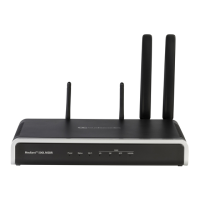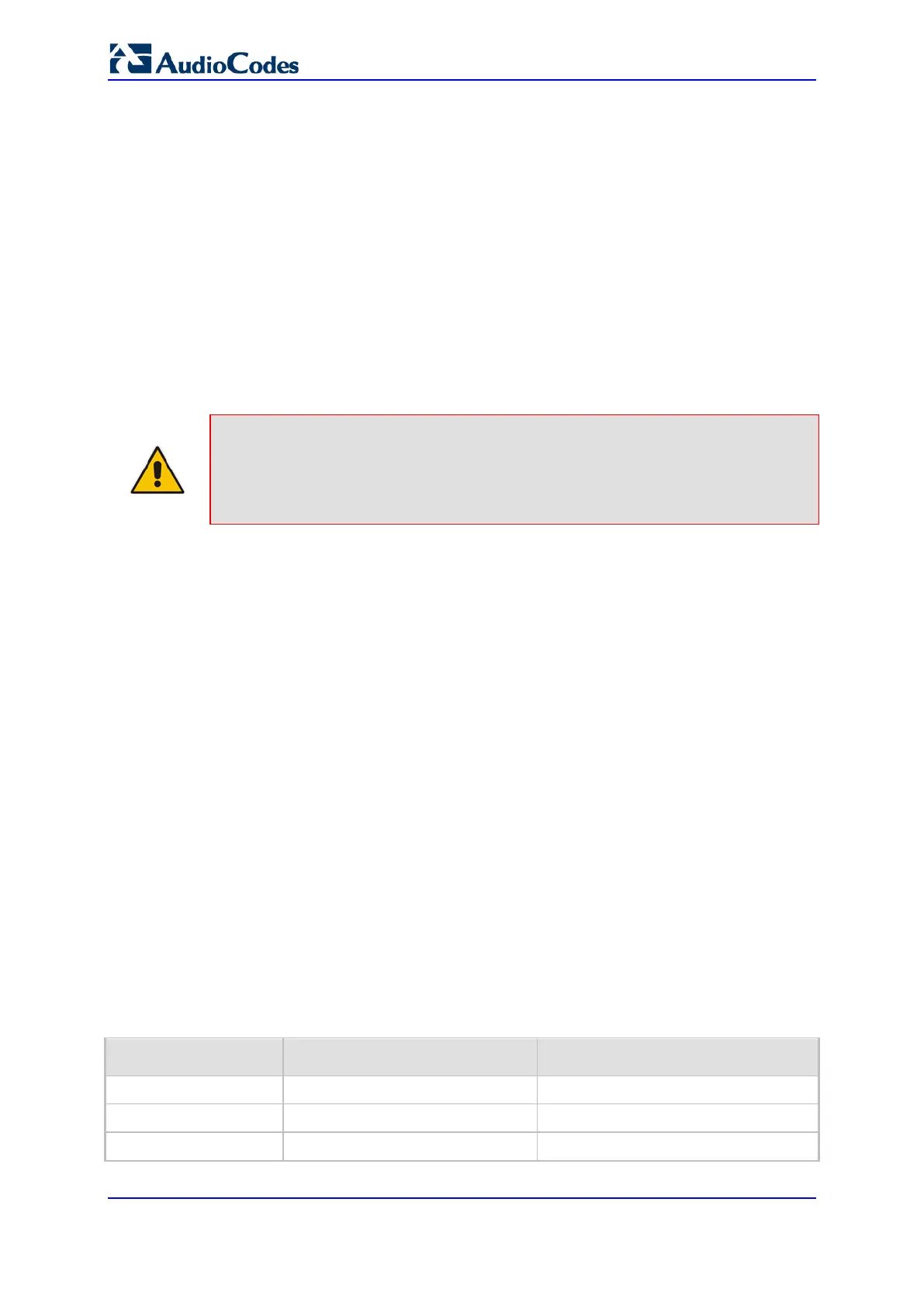User's Manual 150 Document #: LTRT-10466
Mediant 500L MSBR
15.3.2 Troubleshooting the Routing Table
When adding a new static route to the Static Route table, the added rule passes a
validation test. If errors are found, the static route is rejected and not added to the table.
Failed static route validations may result in limited connectivity (or no connectivity) to the
destinations specified in the incorrect static route. For any error found in the Static Route
table or failure to configure a static route, the device sends a notification message to the
Syslog server reporting the problem.
Common static routing configuration errors may include the following:
The IP address specified in the 'Gateway' field is unreachable from the IP network
interface associated with the static route.
The same destination is configured in two different static routes.
More than 30 static routes have been configured.
Note:
If a static route is required to access OAMP applications (for remote
management, for example) and the route is not configured correctly, the route is not
added and the device is not accessible remotely. To restore connectivity, the device
must be accessed locally from the OAMP subnet and the required routes be
configured.
15.4 Configuring Quality of Service
The QoS Settings page lets you configure Layer-2 and Layer-3 Quality of Service (QoS) for
VoIP. Differentiated Services (DiffServ) is an architecture providing different types or levels
of service for IP traffic. DiffServ (according to RFC 2474), prioritizes certain traffic types
based on priority, accomplishing a higher-level QoS at the expense of other traffic types.
By prioritizing packets, DiffServ routers can minimize transmission delays for time-sensitive
packets such as VoIP packets.
You can assign DiffServ to the following class of services (CoS) and assign VLAN priorities
(IEEE 802.1p) to various values of DiffServ:
Media Premium – RTP packets sent to the LAN
Control Premium – control protocol (SIP) packets sent to the LAN
Gold – HTTP streaming packets sent to the LAN
Bronze – OAMP packets sent to the LAN
The Layer-3 QoS parameters define the values of the DiffServ field in the IP header of the
frames related to a specific service class. The Layer-2 QoS parameters define the values
for the 3 priority bits in the VLAN tag according to the value of the DiffServ field in the
packet IP header (according to the IEEE 802.1p standard). The DiffServ table lets you
configure up to 64 DiffServ-to-VLAN Priority mapping (Layer 2 class of service). For each
packet sent to the LAN, the VLAN Priority of the packet is set according to the DiffServ
value in the IP header of the packet.
The mapping of an application to its CoS and traffic type is shown in the table below:
Table 15-12: Traffic/Network Types and Priority
Application Traffic / Network Types Class-of-Service (Priority)
Debugging interface
Management Bronze
Telnet
Management Bronze
DHCP
Management Network

